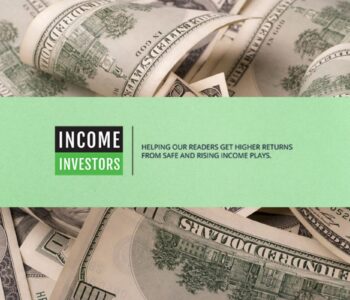Income Investing 101: 3 Potential Ways to Generate More Cash

More Innovative Ways for Income Investors to Earn Higher Yields
If you’ve been investing for a while, you’ve probably noticed something: the financial world is evolving quickly.
In the past, generating income meant sticking to the usual suspects: dividend stocks, bonds, and real estate investment trusts (REITs). But now, thanks to innovation, investors have more tools in the toolbox than ever before.
In fact, some of these income investing opportunities didn’t even exist a few years ago—or they were once too expensive or complex for the average investor to access.
From covered call exchange-traded funds (ETFs) to business development companies (BDCs) and closed-end funds (CEFs), the world of income investing has opened up in ways that would have sounded impossible or just extremely expensive just a decade ago.
Cash Flow Idea #1: Covered Call ETFs—Turning Stock Ownership into Steady Income
One of the biggest innovations in recent years has been the rise of covered call ETFs.
Here’s what this strategy involves in simple terms…
A covered call ETF owns a basket of stocks—like the S&P 500, Nasdaq 100, or stocks in a certain sector—and then sells call options on those holdings.
When it sells these options, the fund collects a premium, which becomes extra income for investors in the fund.
That income is paid out to investors, often monthly or quarterly, in addition to any dividends from the stocks inside the ETF. Mind you: there are now ETFs that pay weekly and bi-weekly, too!
In other words, the fund is using options to generate cash flow, a strategy that, until recently, only sophisticated investors or hedge funds could execute easily.
Why do investors like covered call ETFs? Here are a few reasons:
- Higher yields: These funds can offer distributions of eight to 10%, or even more in some cases.
- Lower volatility: The income collected from selling options can cushion the portfolio during market downturns.
- No trading required: You don’t have to manage options yourself; the fund does it all for you.
There’s no free lunch. Covered call ETFs cap your upside—if the stocks inside the fund soar, investors won’t capture all those gains, because the calls get exercised.
And while they can reduce volatility, they don’t eliminate losses in a market correction.
Still, for many income investors, these ETFs strike a great balance between cash flow and stability.
Cash Flow Idea #2: BDCs—Income From Private Companies
Here’s another powerful income innovation: BDCs.
These are publicly traded firms that invest in or lend money to small and mid-sized U.S. businesses—the types of companies that drive much of America’s job growth but can’t always get traditional bank financing.
When these companies pay interest or repay loans, the cash flows back to the BDC…and, ultimately, to income investors in the form of dividends.
BDCs are required by law to pay out at least 90% of their taxable income to shareholders. That’s why many of them offer yields that are much higher than you’d get from dividend aristocrats, for example. An eight percent to 10% dividend yield is very common among BDCs.
BDCS are a game-changer for income investors. Here’s why: in the past, private lending and small-business financing were exclusive to private-equity firms or institutional investors. Now, with BDCs, everyday investors can participate through the stock market.
You’re essentially tapping into the private credit market—a space that’s been booming as banks pull back from small-business lending.
And since many BDCs are listed on major exchanges, you can buy or sell them just like any other stock.
There are a few things to watch out for when investing in BDCs:
- Leverage: BDCs often borrow money to lend more, which boosts returns—but also increases risk.
- Economic sensitivity: If small businesses struggle in a downturn, loan defaults can rise.
- Tax treatment: Most BDC distributions are taxed as ordinary income, not qualified dividends.
Cash Flow Idea #3: CEFs—Accessing Complex Strategies for Income
Another corner of the income world that’s evolved dramatically is the CEF space.
A CEF works differently from a mutual fund or ETF. Instead of creating and redeeming shares every day, a CEF issues a fixed number of shares when it launches and then trades on an exchange like a stock.
Because it doesn’t have to meet daily redemption requests, the fund manager can invest in illiquid or complex assets—things like private credit, infrastructure, or real-estate debt—that traditional mutual funds often can’t touch.
This allows CEFs to generate higher yields than many conventional funds, and at times announce in advance how much will be paid.
Here’s a breakdown of what makes CEFs attractive:
- Higher income potential: Many CEFs distribute 6%–10% annually and pay monthly.
- Access to alternative assets: You can get exposure to areas like senior loans, preferred shares, or energy infrastructure.
- Discount opportunities: Some CEFs trade below their net asset value (NAV), meaning you can buy $1.00 worth of assets for $0.90 or less.
But CEFs aren’t risk-free.
CEFs can use leverage (borrowed money), which magnifies both gains and losses.
Because their shares trade independently of NAV, their prices can swing with market sentiment.
Still, for income investors seeking diversification and yield beyond traditional stocks and bonds, CEFs are a powerful option.
Income Investing: Innovation Opening Doors
Whether it’s covered call ETFs, BDCs, or CEFs, the theme is the same: income investing has become democratized.
Not long ago, these strategies were reserved for high-net-worth investors or big institutions. Today, anyone with a brokerage account can access income investing strategies that were once out of reach at a very low cost.
That means you can:
- Earn steady income from option premiums.
- Participate in private-market lending.
- Tap into complex asset classes through simple, exchange-listed funds.
These developments have transformed the investing landscape. They’ve given ordinary investors more control, more flexibility, and more choice than ever before.









